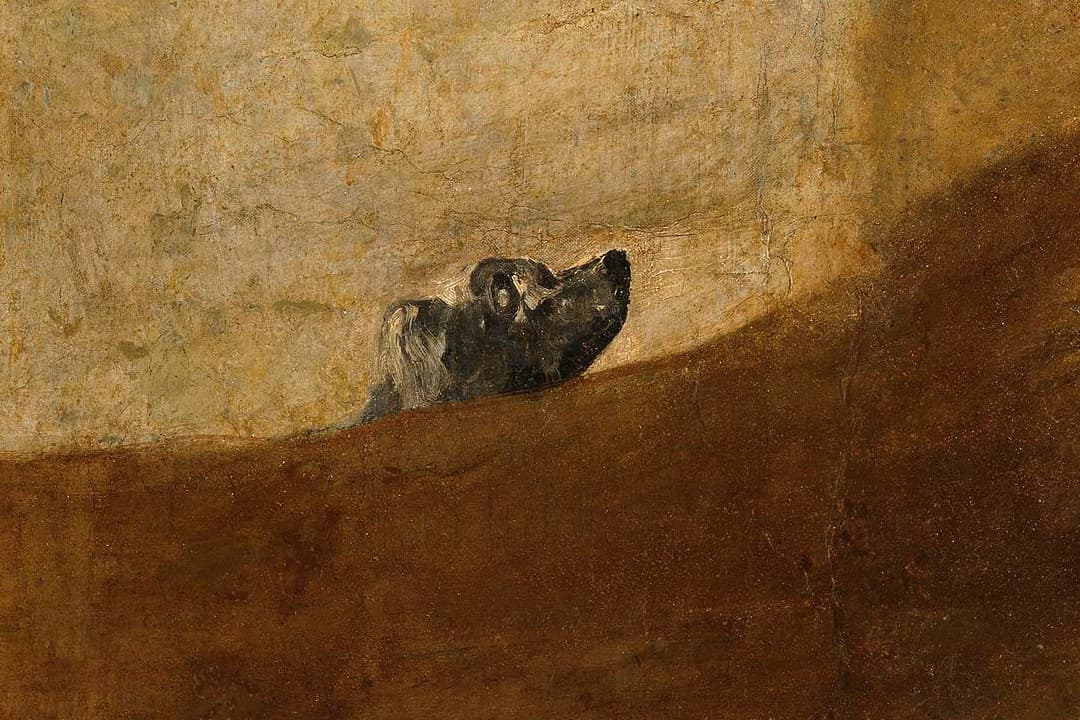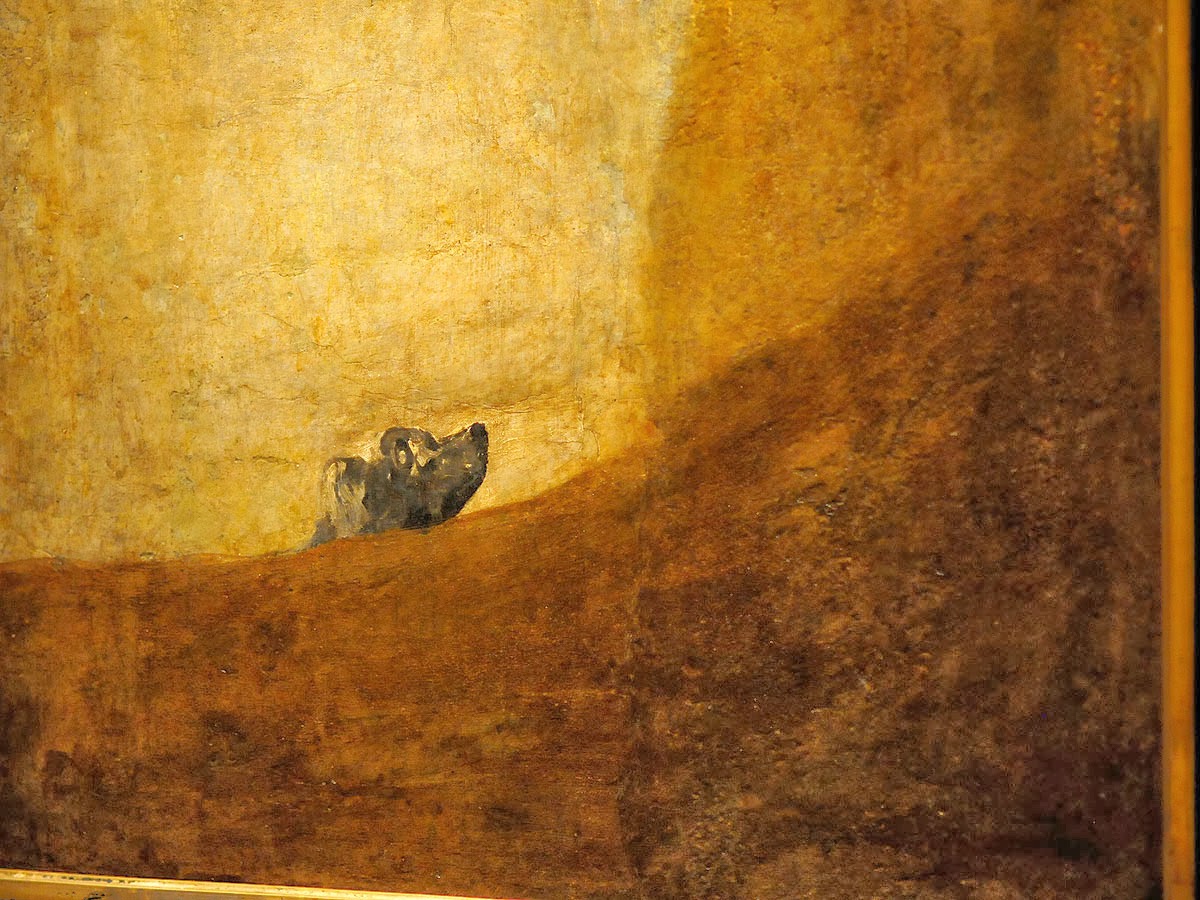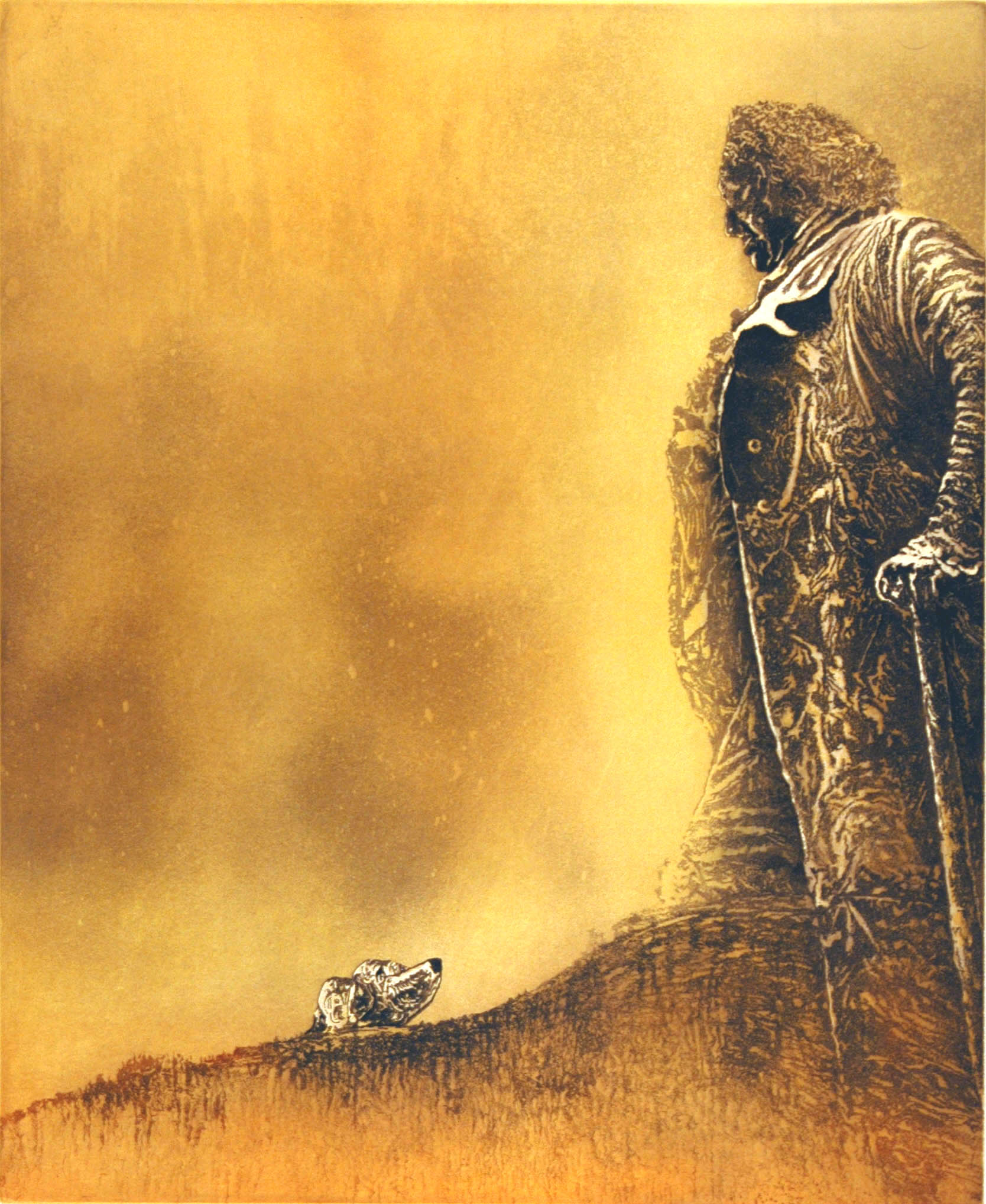
¿A qué o a quién mira el perro de Goya?
The Enlightenment, which undermined this view, lasted from the seventeenth to the end of the eighteenth century; this seminal period came to an end just before Goya painted El Perro. Before the Enlightenment it was acceptable that a man of Augustine's, of Maimonides's or of Aquinas's intellect would be a theologian or at least a devout believer.

El perro de Goya Blogs El Tiempo
COMENTARIO HISTÓRICO ARTÍSTICO DE PERRO SEMIHUNDIDO CONTEXTO HISTÓRICO. Francisco de Goya nació en la localidad zaragozana de Fuendetodos el 30 de marzo de 1746, nació dentro de una familia de clase media baja, su padre era decorador de retablos.. Con cinco años fue enviado para que comenzara su formación artística en la escuela de dibujo de José Ramírez de Avellano y Juan Andrés.

EL PERRO DE GOYA GOYA´S DOG Detalle del cuadro "Retrato … Flickr
Catálogo. Perro semihundido. La Fundación tiene como principal finalidad el impulso de actividades de investigación, estudio y difusión sobre la obra y la figura de Francisco de Goya, así como la promoción de iniciativas para el incremento de las colecciones artísticas públicas relativas a Goya en la Comunidad Autónoma de Aragón y el.

¿A qué o a quién mira el perro de Goya?
In the haunting corridors of Francisco Goya's Quinta del Sordo, a small two-story house on the banks of the Manzanares near Madrid, lies a masterpiece — "The Dog" (El Perro). Born from the.

Perro Semihundido theartwolf
Francisco Goya, El Perro, 1819-1823. A small little dog, half hidden, with a frightened look, who helplessly watches the devilishness put in place on the walls of the Quinta. A metaphor in which the dog would be the painter himself, crushed by everything that surrounds him. It is a subversive portrait: Goya witnessed the corruption and.

Reality Bites Bite 106 Francisco de Goya The Dog, 181923
The Dog (Perro semihundido/El perro) The-Dog-Black-Paintings-Goya. A forlorn looking black dog pokes his head out above a dirt mound. The dog is lost in the emptiness of the image which is vacant except for the sloping mound which conceals him. There are many interpretations of Goya's intentions, one of which is, the work.

El perro de Goya una pintura especial y su historia Dogalize
What the Dog Doin'? I've finally found out!https://vinydewonderful.blogspot.com/https://viny.pb.gallery/Bibliography:https://en.wikipedia.org/wiki/Black_Pain.

Antonio Saura El Perro de Goya nº 2, 1990,...
Perro semihundido. 1820 - 1823. Técnica mixta sobre revestimiento mural trasladado a lienzo, 131 x 79 cm. Sala 067. El conjunto de catorce escenas al que pertenece esta obra se ha popularizado con el título de Pinturas Negras por el uso que en ellas se hizo de pigmentos oscuros y negros y, asimismo, por lo sombrío de los temas.

El perro semihundido de Francisco de Goya YouTube
Francisco de Goya. Perro semihundido, o simplemente, El perro, es una de las Pinturas negras que formaron parte de la decoración de los muros de la casa —llamada la Quinta del Sordo— que Francisco de Goya adquirió en 1819. La obra ocupaba un lugar a la izquierda de la puerta de la planta alta de la casa. La obra, junto con el resto de las.

Goya Perro semihundido Art, Painting, Drawings
El perro de Goya. 1990. Litografía sobre papel continuo. La calidad excepcional del arte en el Museo del Prado es un manantial para la creación artística contemporánea al que siguen acudiendo hoy los artistas de todas las partes del mundo. Calvo Serraller también supo hacer revivir ese pulso constante entre los artistas y el Prado.

El perro de Goya (Antonio Saura) Apuntes de Arte (Revista de Crítica
The Dog (Spanish: El Perro) is the name usually given to a painting by Spanish artist Francisco Goya, now in the Museo del Prado, Madrid. It shows the head of a dog gazing upwards. The dog itself is almost lost in the vastness of the rest of the image, which is empty except for a dark sloping area near the bottom of the picture: an unidentifiable mass which conceals the animal's body. The.

La Quimera del Arte Ni muro, ni roca, ni arenas movedizas... El perro
El perro de Goya (The Goya's Dog) Antonio Saura. Huesca, Spain, 1930 - Cuenca, Spain, 1998 . Collaborators . Jean-Clarence Lambert - Paris, France, 1930 (Text) Series: Cuatro retratos imaginarios de Goya (Four Imaginary Portraits of Goya) Date: 1972. Technique: Silk screen print on paper.

El perro de Goya o la condición humana Sebastián Gámez Millán Café
The Dog (Spanish: El Perro) is the name usually given to a painting by Spanish artist Francisco Goya, now in the Museo del Prado, Madrid.It shows the head of a dog gazing upwards. The dog itself is almost lost in the vastness of the rest of the image, which is empty except for a dark sloping area near the bottom of the picture: an unidentifiable mass which conceals the animal's body.

El perro de Goya Pedro Grifol Loscos
The Dog is the name usually given to a painting by Spanish artist Francisco Goya, now in the Museo del Prado, Madrid.It shows the head of a small dog gazing upwards. The dog itself is almost lost in the vastness of the rest of the image, which is empty except for a dark sloping area near the bottom of the picture: an unidentifiable mass which conceals the animal's body.

Cuando una fotografía antigua desveló el misterio de una de las
Francisco de Goya · Perro Semihundido 1820-1822 - Fresco trasladado a lienzo - Madrid, Museo del Prado Francisco de Goya - The Dog - 1820-1822 Fresco transferred to canvas - Prado Museum - MadridFrancisco de Goya - The Dog - detail En 1819, Goya se traslada a la una finca en las afueras de Madrid -posteriormente conocida como la "Quinta del Sordo"- y comienza a pintar en sus paredes una.

Antonio Saura El perro de Goya (plancha 4) (The Goya's Dog [Plate 4])
¿Qué está mirando el perro semihundido de Francisco de Goya? Esta es una de las pinturas más importantes dentro de la serie de pinturas negras del Museo del.